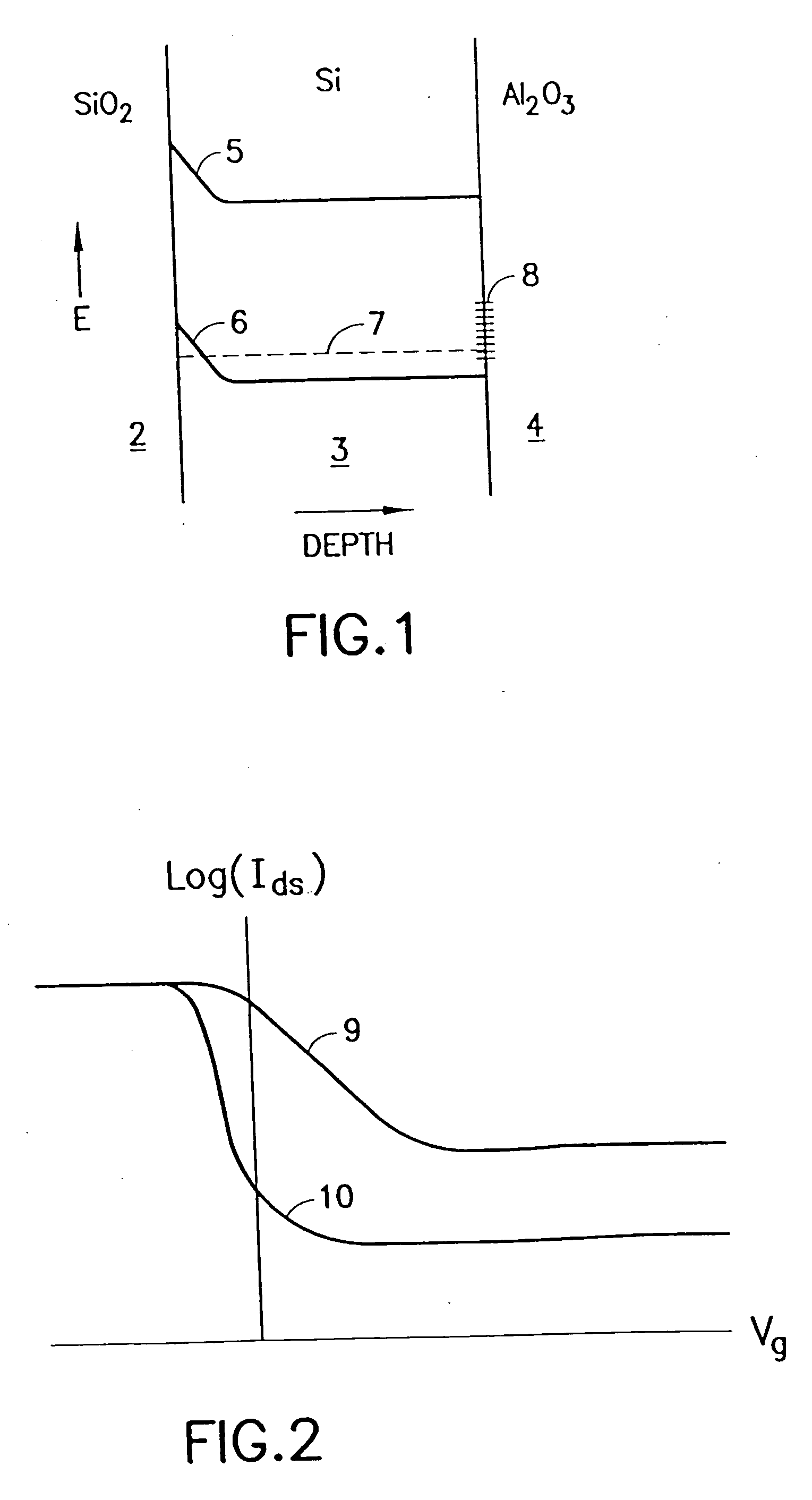Radiation-hardened silicon-on-insulator CMOS device, and method of making the same
a technology of silicon-on-insulator and cmos, which is applied in the direction of semiconductor devices, basic electric elements, electrical equipment, etc., can solve the problems of introducing radiation damage into the fabricated semiconductor structure, affecting the performance of the device, and affecting the hardness of the p-channel transistor. achieve the effect of improving the hardness of the p-channel transistor and performance advantages
- Summary
- Abstract
- Description
- Claims
- Application Information
AI Technical Summary
Benefits of technology
Problems solved by technology
Method used
Image
Examples
Embodiment Construction
[0049] The invention is described in detail below with reference to the figures wherein like reference numerals refer to like elements or regions throughout. The P-channel MOS devices are formed in ultrathin silicon-on-sapphire wafers, prepared by methods disclosed in, for example, U.S. Pat. Nos. 5,416,04; 5,492,857; 5,572,040; 5,596,205; 5,600,169; 5,663,570; 5,861,336; 5,863,823; 5,883,396; 5,895,957; 5,920,233; 5,930,638; 5,973,363; 5,973,382; and 6,057,555.
[0050] To accomplish an effective radiation-hardening retrograde doping profile, the dopant concentration in the channel region can be controlled by well-known methods, e.g. ion implantation or epitaxy. Formation (by both ion implantation and epitaxy) and properties of semiconductors with retrograde doping profiles are discussed, for example, by Wolf (Silicon Processing for the VLSI Era. Volume 3: The Submicron MOSFET. Wolf, S.; Lattice Press, Sunset Beach, Calif., 1995; pages 539-555).
[0051] As used herein, the terms “retro...
PUM
 Login to View More
Login to View More Abstract
Description
Claims
Application Information
 Login to View More
Login to View More - R&D
- Intellectual Property
- Life Sciences
- Materials
- Tech Scout
- Unparalleled Data Quality
- Higher Quality Content
- 60% Fewer Hallucinations
Browse by: Latest US Patents, China's latest patents, Technical Efficacy Thesaurus, Application Domain, Technology Topic, Popular Technical Reports.
© 2025 PatSnap. All rights reserved.Legal|Privacy policy|Modern Slavery Act Transparency Statement|Sitemap|About US| Contact US: help@patsnap.com



